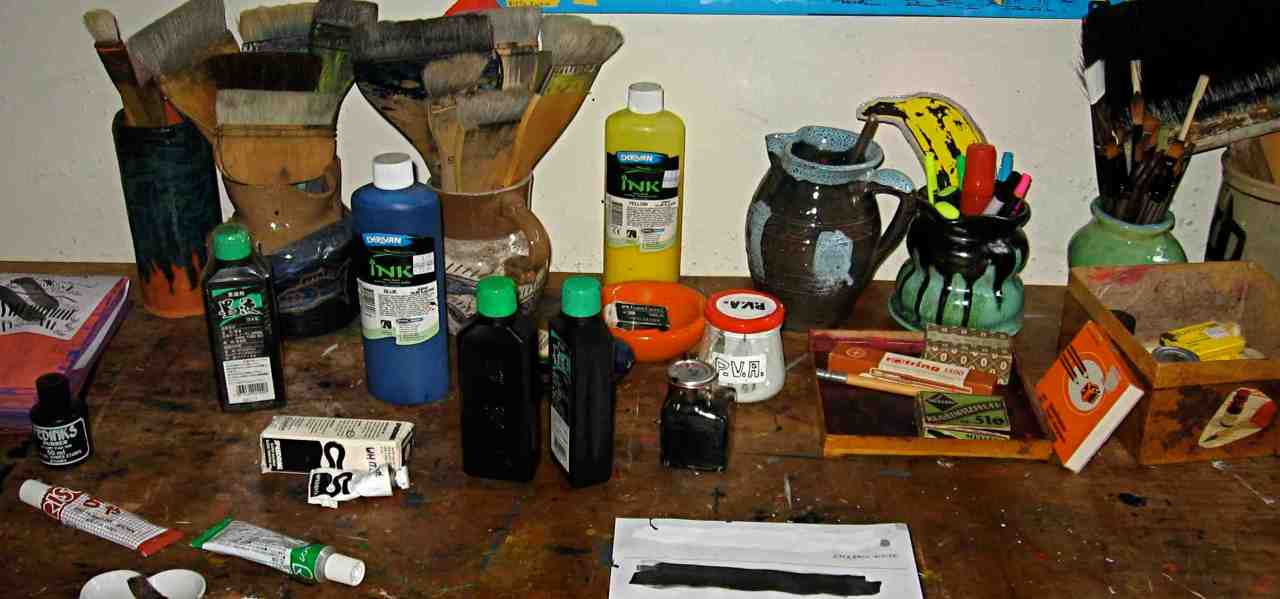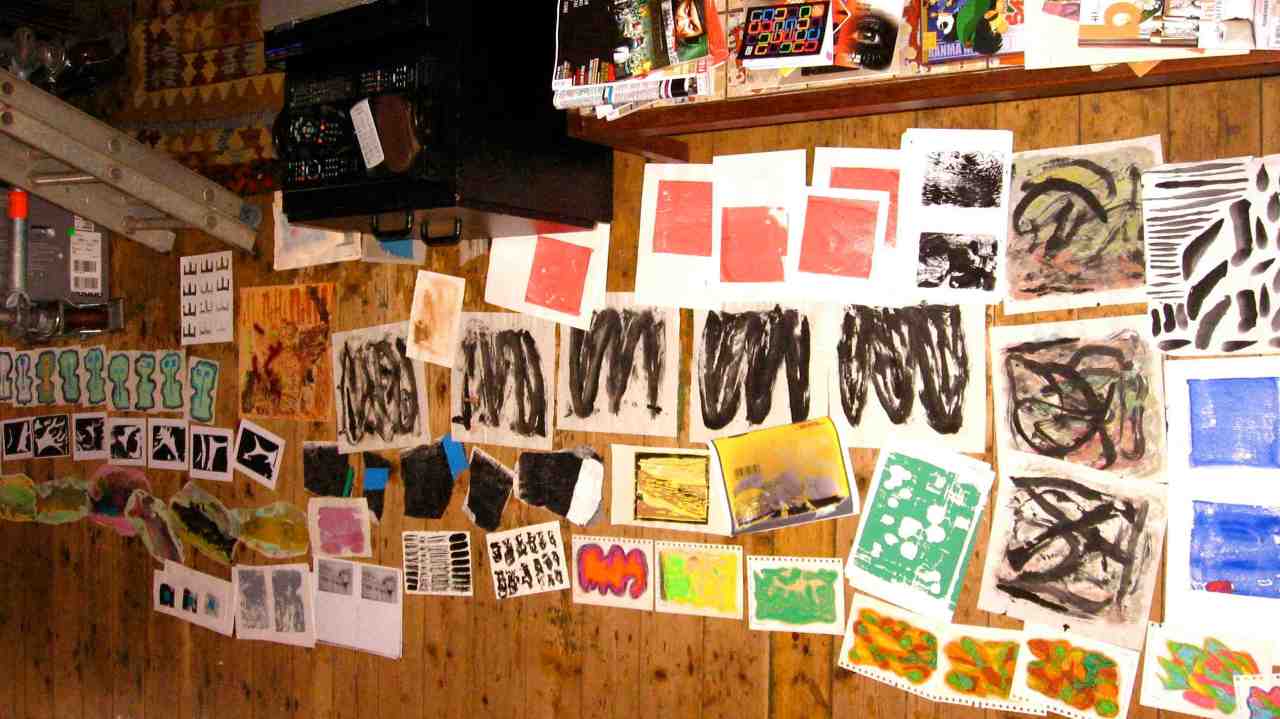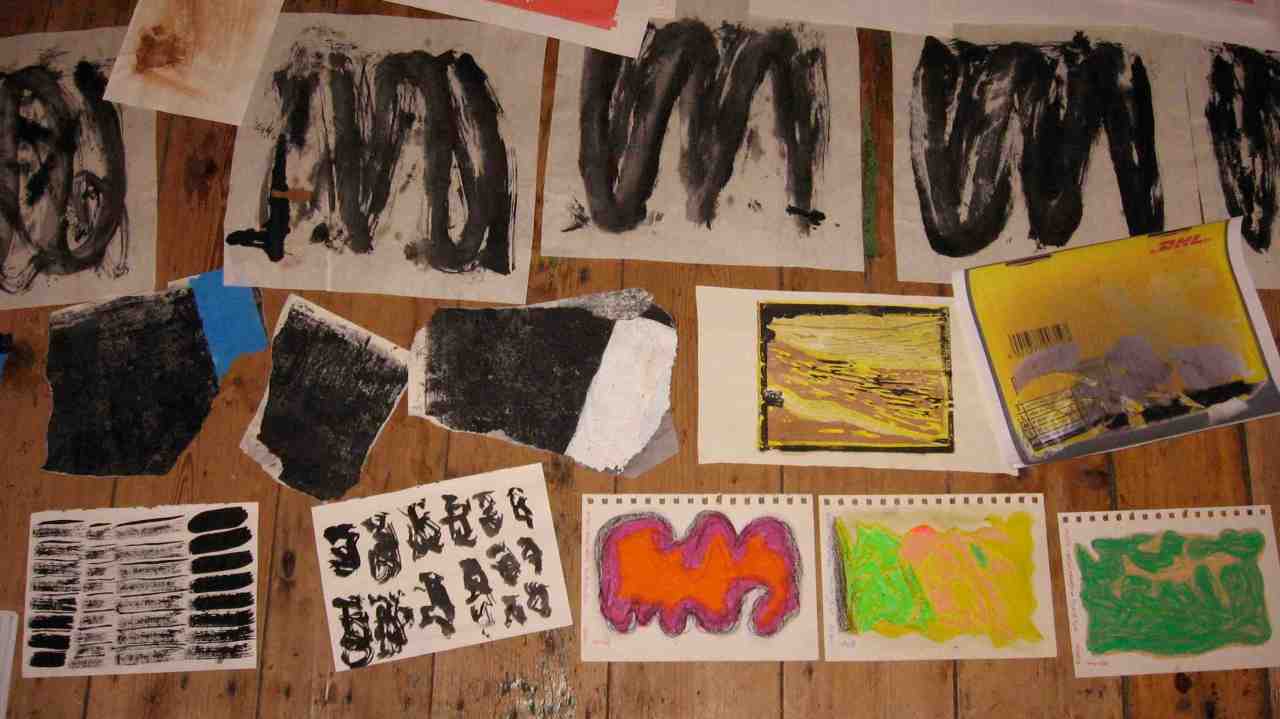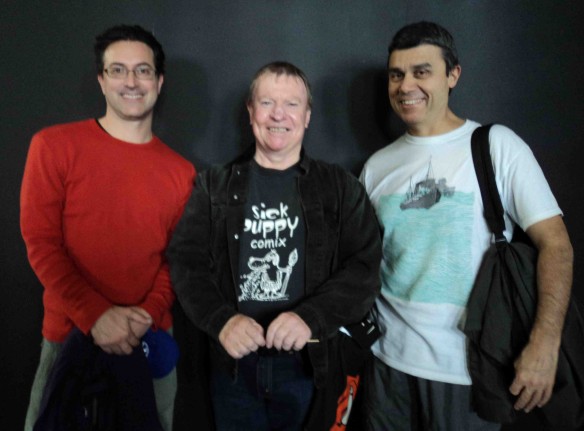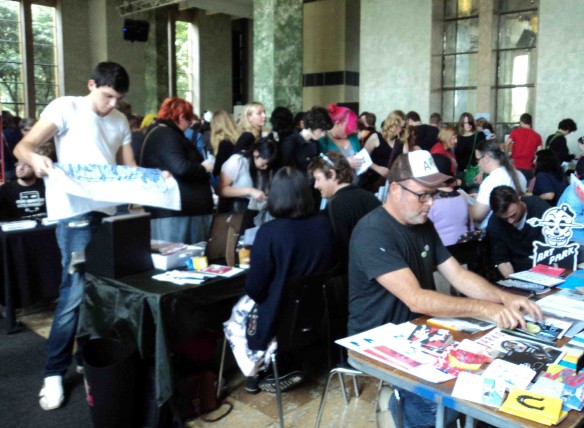After a period in which I have been doing the odd bit of guest blogging and micro blogging I am now concentrating on the establishment and development of my very own blog! In fact I started out with the idea of having two blogs: Doctor Comics (more serious) and Doctor Comictopus (more fun) but after awhile decided to merge these two into a single blog (one that is both fun and serious). So this is the first post on the new, now one and only Doctor Comics blog. I really love comics and have read them since I was a child, second eldest in a family of seven children. Every Sunday morning after attendance at church, and after breakfast, I would sit and read the comics section of the Adelaide Sunday Mail newspaper. Of course I had to wait till my father finished reading it first as he had dibs on the sports section and the funny pages. He even read the comics section before the Sporting Pages! Go Dad! It felt good to hear him laugh. My father also regularly read both English war comics (he fought in World War II) and American Wild West adventure comics(War and Westerns were his favourite genres). He enjoyed these and would make the sounds of bombing raids and gunfights whilst reading battle scenes and gunfights. That was amusing. Once read he left the newspaper lying on the carpet of the lounge room floor for the rest of the family to read, and I was usually the first in line. I remember reading and enjoying Uncle Joe’s Horse Radish by Joe Jonnson (an odd bit of English spelling I thought at the time not knowing the cartoonist was Swedish), and also The Potts by Jim Russell whom I would later meet in my adult years at a comics convention in Sydney whilst studying and researching comics and cartoons at university. Also back in childhood, my mother would buy me a comic whenever I was home ill, in bed and unable to attend school…a Donald Duck or a Dennis The Menace, and even a bonzer edition when I had my tonsils out. I knew them by their titles then and only later learned that they were the work of comics artists Carl Barks and Hank Ketcham respectively. So I can say that my parents contributed to my developing love of comics. I also had a couple of kind aunties who would buy me an occasional imported weekly comic such as the British BEANO, EAGLE and TIGER childrens comics that were shipped to Australia and arrived approximately three months after their English publication date. I later learned that my interest in outer space, English football and comedy capers was kindled by my childhood reading of comics. On reaching adulthood I still read comics in bed but no longer waited till I was ill.
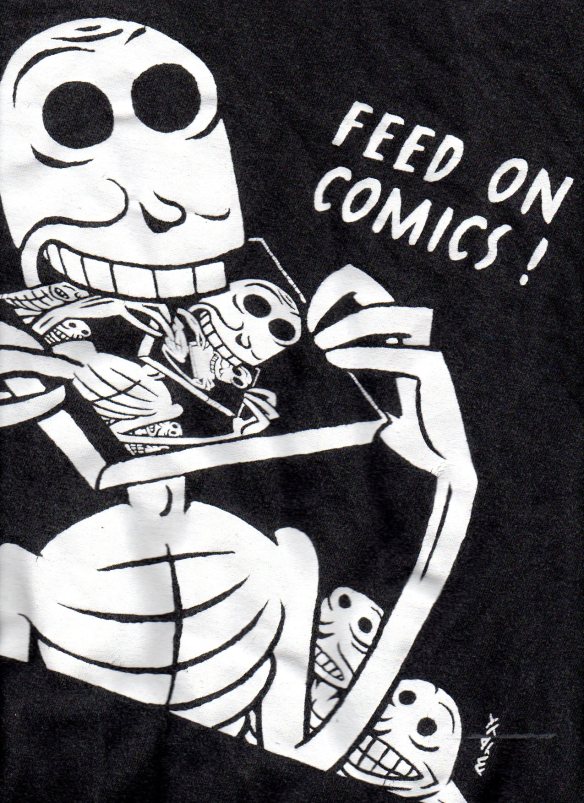
The T-shirt design by Max

Louise Graber and Dr. Michael Hill a.k.a. Doctor Comics at a Halloween Party in Sydney. (Photo by Kat Smolynec, Painting by Anton Emdin, Feed On Comics T-shirt by Max)
My interest in and enthusiasm for comics continued throughout childhood and adolescence and into adulthood, as an art school and then design school academic. I enthusiastically developed a serious interest in studying and researching the medium. Along the way I was interested in other media, too: theatre, film, radio and television. I have always loved to draw and often received colour pencil or paint sets for Birthday and Xmas presents. My birthday is just a few days prior to Xmas day and so presents for the former were usually postponed and merged with the latter. In any case I put those art presents to use, drawing, sketching and painting at home. I had no art tuition at school. I was awarded the Religious Prize one year in Primary School for a single painting I did of The Little Flower (Saint Teresa) floating up to Heaven, instead of an essay. It made the nuns cry. I wish I still had that painting but they ran off with it. I had submitted it as a school project and received excellent marks for it as well as the annual end-of-scolastic-year Religious prize. The really smart kids in the class cried “Unfair!..he didn’t do the essay but won the prize for art!” Some of their parents complained about this to the nuns on Speech Night. Somehow I managed to keep the prize but I never got the painting back. My mother reassured me with a “well at least you made the nuns happy!” comment. Also my parents were very proud of me getting the prize and counselled me to never to query or talk back to a nun. This proved to be sound advice as following Primary School with the Dominican nuns I came up against the much tougher Christian Brothers in Seconday School, rigid disciplinarians with no interest in art.
Since my adolescence I have been involved in comics studies, first reading and collecting then progressing to the drawing of them. Later, working at an art school in the Visual Communication Department I considered comics an appropriate field of study and research. I followed up on that. Ultimately I was awarded a Ph.D. for my research into Australian ‘small press’ comics. That is where the alias comes in. I’m known as Michael Hill, Ph.D. (a.k.a Doctor Comics). I completed the doctorate in 2003 and acquired the alias in 2006 on a radio talkback show that my agent Andrew Hawkins arranged for me to appear on…one caller said he wanted to talk to “that Doctor Comics guy”…(cue first embarrassment then amusement as the radio announcer informed the audience that it was appropriate as I actually had a Ph.D. in comics!) Although that “Doctor Comics” label sounded odd and a little awkward at the time, following adept efforts by my agent it caught on and I became accustomed to it. It gave me a head start in the media, too, thanks again to my agent who set me up with the doctorcomics.com website address and the doctorcomics@gmail.com email account. Aided by the diverse range of publications available and the growing amount of resources online it has since become a rich time to study comics. Pluralism reigns. There are numerous creators from diverse cultures making good comics in a multitude of styles, formats and media, along with the usual standard material. I became increasingly drawn to the notion of making my own comics and now I’m finally working on my first attempt, a solo project, tentatively titled Blotting Paper: The Recollected Graphical Impressions Of Doctor Comics.

My 99 Expo entry card with Brian Ralph illo.
My intention is that this blog will reflect my interest in reading, researching, critiquing and creating comics art as expressed by the Feed On Comics! call from the Max (photo above) official T-shirt of the ICAF ( International Comic Arts Festival) at Bethesda, Maryland, 1999 that I attended. The event comprised both a conference and a convention. The academic conference was chaired by Gene Kannenberg, Jr., the “big guy” who enthusiastically and inspiringly led proceedings, attended by a bunch of like-minded souls, i.e. academics researching comics. Gene made me feel very welcome. Amongst those who attended was John A. Lent who was selling the first issue of IJOCA, the International Journal of Comic Art Vol. 1, No. 1 Spring/Summer 1999, that he had produced and published as Editor-in-Chief, Randy Duncan, Charles Hatfield, Mike Kidson whose paper “William Hogarth: Printing Techniques and Comics” inspired my later graphic research into Hogarth, printmaking and comics, Pete Coogan, Pascal Lefèvre, Jeff Miller, Ana Merino, Jeff Williams, Mark Nevins, Michael Rhode, Guy Spielmann, and Joseph “Rusty” Witek. They were pleased to have someone from Australia attend and let me choose the restaurant on the first day…I said “Is there a Mexican Restaurant?”..at the time we didn’t have any Mexican restaurants in Sydney…they all laughed and took me to one of the several around.
This conference gave me a wonderful sense of validation for the academic study of comics that was to eventually lead me to the research and completion of my Ph.D. thesis in comics studies. I also became a member of the International Editorial Board of John Lent’s journal, IJOCA, representing Australia. At that Bethesda conference in 1999, I made a presentation on Australian alternative comics based on the research I had been doing in Sydney. As the conference wound down the comics expo kicked off downstairs on another floor of the same Holiday Inn hotel in Bethesda, Maryland. This convention, known as the Small Press Expo, honoured alternative comics (see my 99 EXPO card above). I bought several comics and sold some I had brought with me from Australian small press creators. I also met Gary Groth, “wow!” the guy who runs The Comics Journal…he seemed to be on the look out for “comics stuff”…and Neil Gaiman, “yes, him!”, in the lift, talking to someone in his dulcet English tone that was lovely to listen to!..they, and many others that I had only read about…were in attendance, wandering around at the event. Comics was their business…it was what they produced and were famous for! In the evening there was an award ceremony at which comics artist James Kochalka performed, totally naked…and each category winner received a brick!… just like the one Ignatz threw at Krazy. I was impressed! The event celebrated both the study and creation of comics and now has particular resonance for me as I begin this blog and continue to carry on reading, researching, teaching and writing about comics.
So there we are! I’m off and running with this blogging thing and I plan on continuing. I hope you enjoy it!

SPX99, my copy of the Small Press Expo program in Bethesda, Maryland.

The Doctor Comictopus alias for Michael Hill Ph.D.(a.k.a. Doctor Comics) designed by Michelle Park.
UPDATE: The Doctor Comictopus blog, my original comics blog with an alias designed by Michelle Park that referred to my active acquisition of comics (see above), has been discontinued, however, some elements have been merged with this Doctor Comics blog.



















